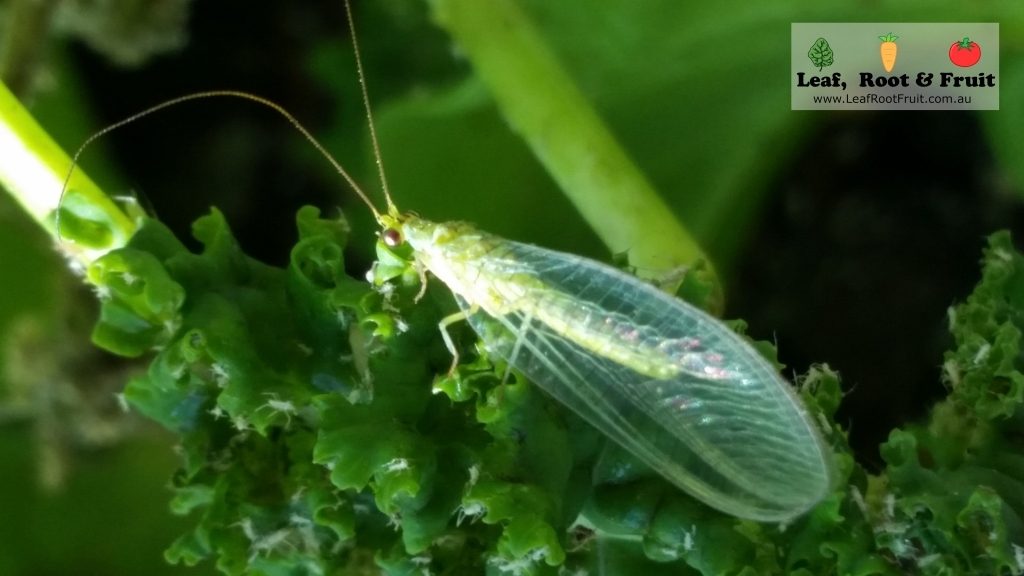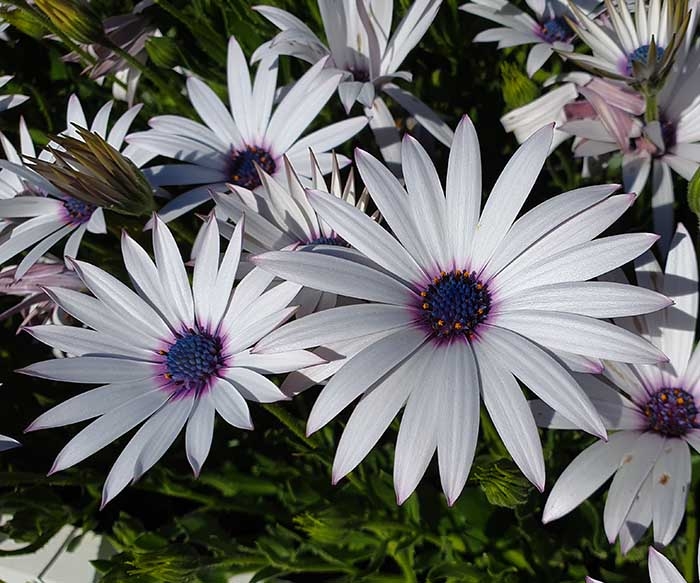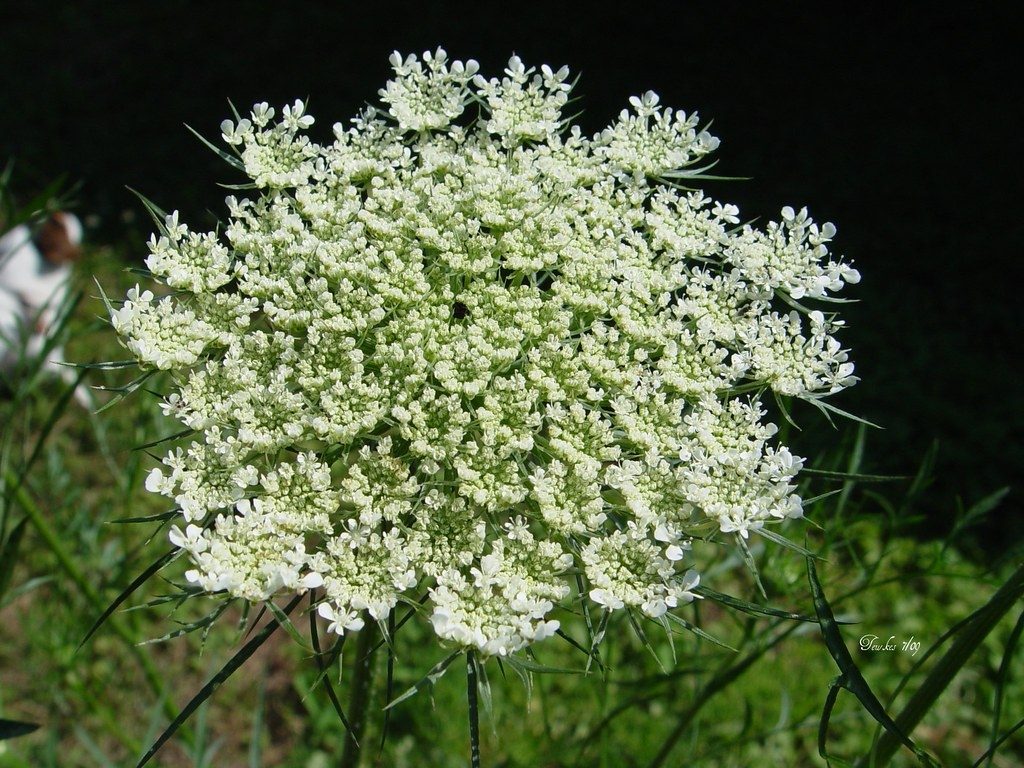My blog post on pest predator dynamics highlighted the importance of treating your garden as an ecosystem. I also discussed “good bugs” and “bad bugs” to show the importance of beneficial insects in the garden. Here I identify some great strategies for attracting beneficial insects or “good bugs” into the garden.

Flowers are the single most important thing you can introduce to your garden to make it more resilient
Although, it doesn’t really make sense, does it?
For example, lace wings are beneficial in the garden because they eat aphids and whitefly. If the food source of the beneficial lacewing is “bad bugs”, why would flowers bring good bugs into the garden?
The key to this, is understanding the life cycle of beneficial insects. All insects share a few things in common, such as having three body segments and six legs. They also share a similar life cycle.

Let’s start with an egg that hatches into a larva, in the case of the lacewing, it is an antlion. It is the antlion larva that does all of the good work in the garden.


The lacewing ant lion for example eats sixty aphids a day! Ladybug larvae consume a similar quantity of pest bugs. This tends to be the stage of the “good bug” life cycle that does the pest control in the garden for us.
The next stage in the life cycle is metamorphosis. Butterflies, lacewings, ladybugs, hoverflies all create a cocoon or a chrysalis and go through a metamorphosis. At the end of this transformation they emerge as an adult with wings.

The adult stage of the life cycle doesn’t usually eat “bad bugs”, instead it usually eats pollen.
Pollen comes from flowers. So if you don’t put lots of flowers in the garden, the adults (who now have wings) will fly away to find pollen.
The next stage in the life cycle is the laying of eggs. This is likely to be near a food source for all stages of the life cycle. So, if you don’t have “bad bugs” and pollen present in your garden, the “good bugs” will lay their eggs elsewhere, probably in your neighbour’s garden, where they have both types of food available.
The eggs hatch in your neighbour’s garden. But the larvae don’t have wings. So they stay there, helping to keep your neighbour’s “bad bug” population in check. Without flowers you won’t have that army of good bugs in the garden ready to control any “bad bugs” and keep them in balance.
The good bugs need their entire life cycle fed. That means flowers for the adult stage and sap sucking insects for the larvae stage.
“Good Bugs” can’t exist without “Bad Bugs”… so does that make all bugs “good”?!!!
There are opportunities to purchase good bugs, or use pheromone lures to bring beneficial insects into the garden. But what’s the point in attracting them in if you don’t have the food for them? It’s time to plant some flowers in your garden!
What sort of flowers do we use to attract beneficial insects into the garden?
Most “good bug” larvae have really strong, small, little jaws to break up aphids, white flies and all those little bad bugs in the garden. When they go through the metamorphosis, they still have the same short, strong, little mouth parts. They don’t have a long proboscis like a butterfly.

To bring good bugs into the garden, focus on flowers where the pollen is readily accessible. Compound (flower heads made up of many small flowers) and umbelliferous (compound flowers that look like umbrellas) flowers are great, such as those from the Apiaceae family. Members of the Asteraceae (daisy) family are generally hardy favourite food sources for beneficial insects in your garden.


Below are Some great beneficial insect attracting flowers that I use in my clients’ gardens:
Calendula (Calendula officinalis)
Also known as Pot Marigold, these annual plants bestow masses of yellow and orange “suns” around the garden. They readily self-seed and thrive in most soils. Calendulas will flower for most of the year, which offers year-round food for the adult stage of good bug life cycles.

Passionfruit Marigold (Tagetes lemonii)
This plant is my favourite scent in the garden. A drought tolerant, perennial marigold, it has a rich passionfruit scent. Growing to about 150 x 150cm, but can be kept smaller with regular pruning. It is covered in a mass of golden, daisy flowers for most of the year. Can struggle to establish in colder months, but once established is very hardy.

Feverfew (Tanacetum parthenium)
Traditionally feverfew was used to treat fevers, hence the name. Grows to about 70cm tall and covered in yellow-centred daisy flowers with white petals. The plant is a perennial in Melbourne, but may act as an annual in cooler areas.

Chamomile
German chamomile (Matricaria chamomilla) is the annual version of this ground cover and the one most recommended for herbal infusions. Roman or English Chamomile (Chamaemelum nobile) is the perennial version. It spreads to form a low but thick matting ground cover. Great for supressing weeds in the garden. The small “daisy like” flowers are great for providing pollen to beneficial insects.

Lucerne (Medicago sativa)
A perennial legume; it’s more commonly associated with being a fodder crop, or as alfalfa sprouts, but makes a great addition to your garden. Being a legume, it will fix nitrogen to help improve your soil. The striking purple flowers are great for attracting bees and beneficial insects. In Melbourne, this plant tends to die back in winter. At this time I cut back the spent foliage and use it as mulch throughout the garden. A very handy plant indeed!

Sweet Alyssum (Lobularia maritima)
This small, annual plant can become a bit of a weed in the garden. The plants are hardy, and become covered in masses of tiny flowers in spring. Flower colours can range from white, to pink and even purple.

Cosmos (Cosmos spp.)
Cosmos plants are mostly annual species that will readily self-sow in the garden. They have fine feathery foliage and large showy flower heads throughout warmer months.

Yarrow (Achillea millefolium)
A perennial groundcover with striking feather leaves and clusters of flowers. It tolerates wet soils and partial shade. Reportedly, Yarrow has medicinal uses (Achilles apparently used yarrow to treat soldiers on the battlegrounds of Troy).

Queen Anne’s Lace (Daucus carota)
A great plant to include and another name it goes by is “wild carrot”. That’s because they are the same species as carrots! Large umbels of Queen Anne’s Lace white lacy flowers are commonly seen as weeds on roadsides. Mass planted in the garden, they make a great feature. They are an annual plant that readily self-seeds.

Vegetable Flowers
Let veggies go to seed for the benefit of the insects. Don’t rip them out of the ground as soon as they bolt. The added bonus is that you’ll have the next crop of veggies self-sown, for free and with no effort whatsoever. Great plants to let self-seed in the veggie patch include parsley, dill, fennel, lettuces, and carrots.


Want more ideas on plants that can help make your garden ecosystem more resilient? Check out my list of Understory Plants for Temperate Climate Edible Forest Gardens.
This is Part Two in a three-part series on Garden Ecosystems. The other two parts are:
Part One: Pest Predator Dynamics and how to get the balance right!
Part Three: How to turn your garden into a Resilient Ecosystem
If you would like further information on garden ecosystems, then please sign up to our Science of Edible Gardening Workshop Series. The April workshop (repeated annually) in the series focuses heavily on population dynamics and pest predator interactions.


This site looks like just what I need for starting from scratch.
Thanks for the great feedback Russell! Good luck with the new garden.
Perfect. I am hoping to hold a workshop on beneficial insects. When I brought the subject up to the team, they said “it needs to go for about 30 minutes to an hour?”, I said “Yes?” I don’t think they realised how interesting and important insects can be. They are so important to the health of our gardens, but some people would prefer to use instecticides and diatomacious earth. Do people know the secondary effects of this to lady birds and other insect species? I hope to bring this to their attention (positively). Thank you
Hi Fiona,
That’s great that you are spreading the “good word” on insects and beneficials in the garden. I often run whole day workshops on this topic and could easily extend it to a workshop over several days… without boring the audience!
Keep up the great work
Duncan
I appreciate and require every bit of this information. I am a novice gardener so I have so much to learn. Thanks so much for imparting this educational advice.
Thanks for the great feedback Tracy. Glad you have found it useful!